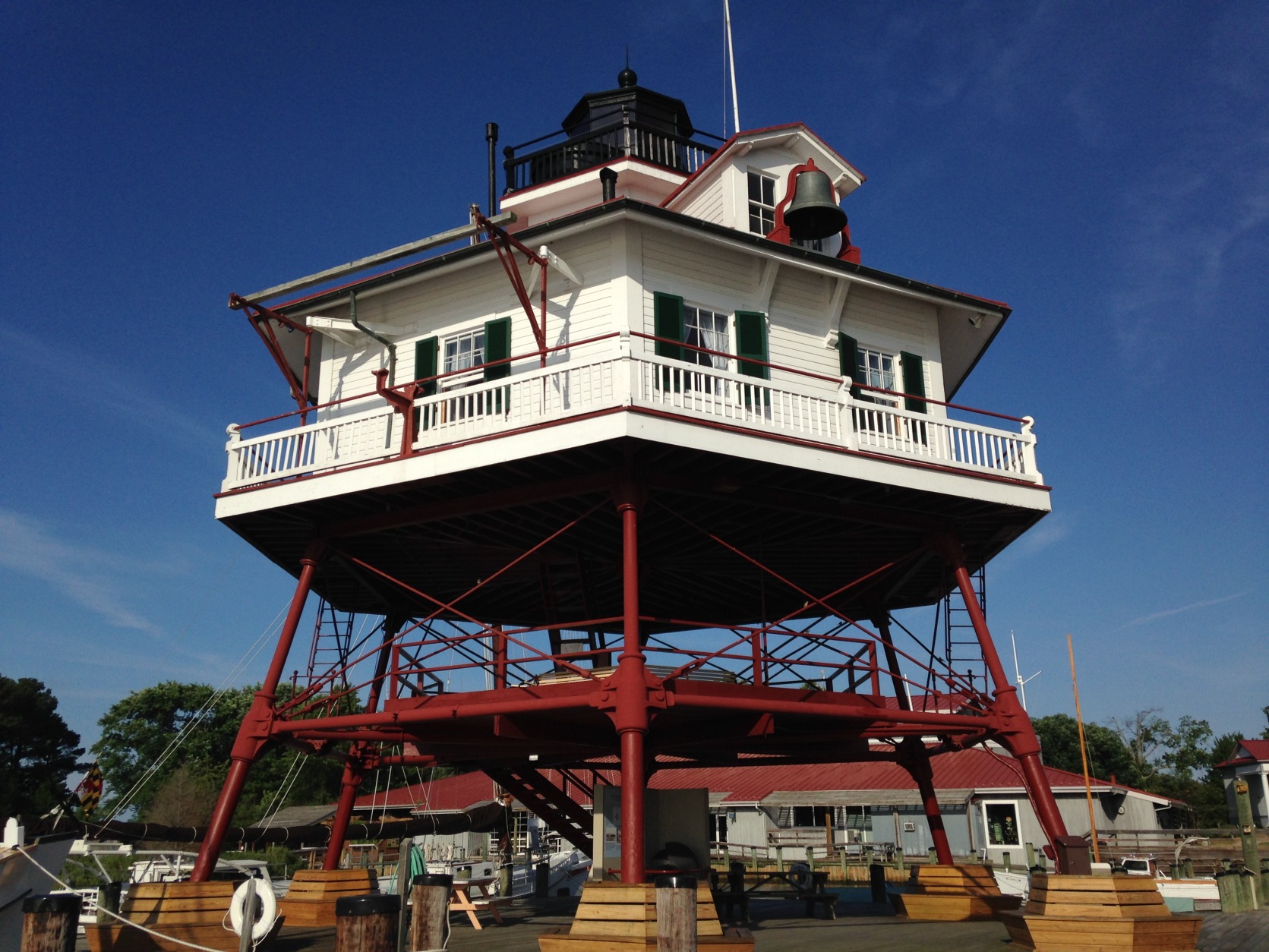
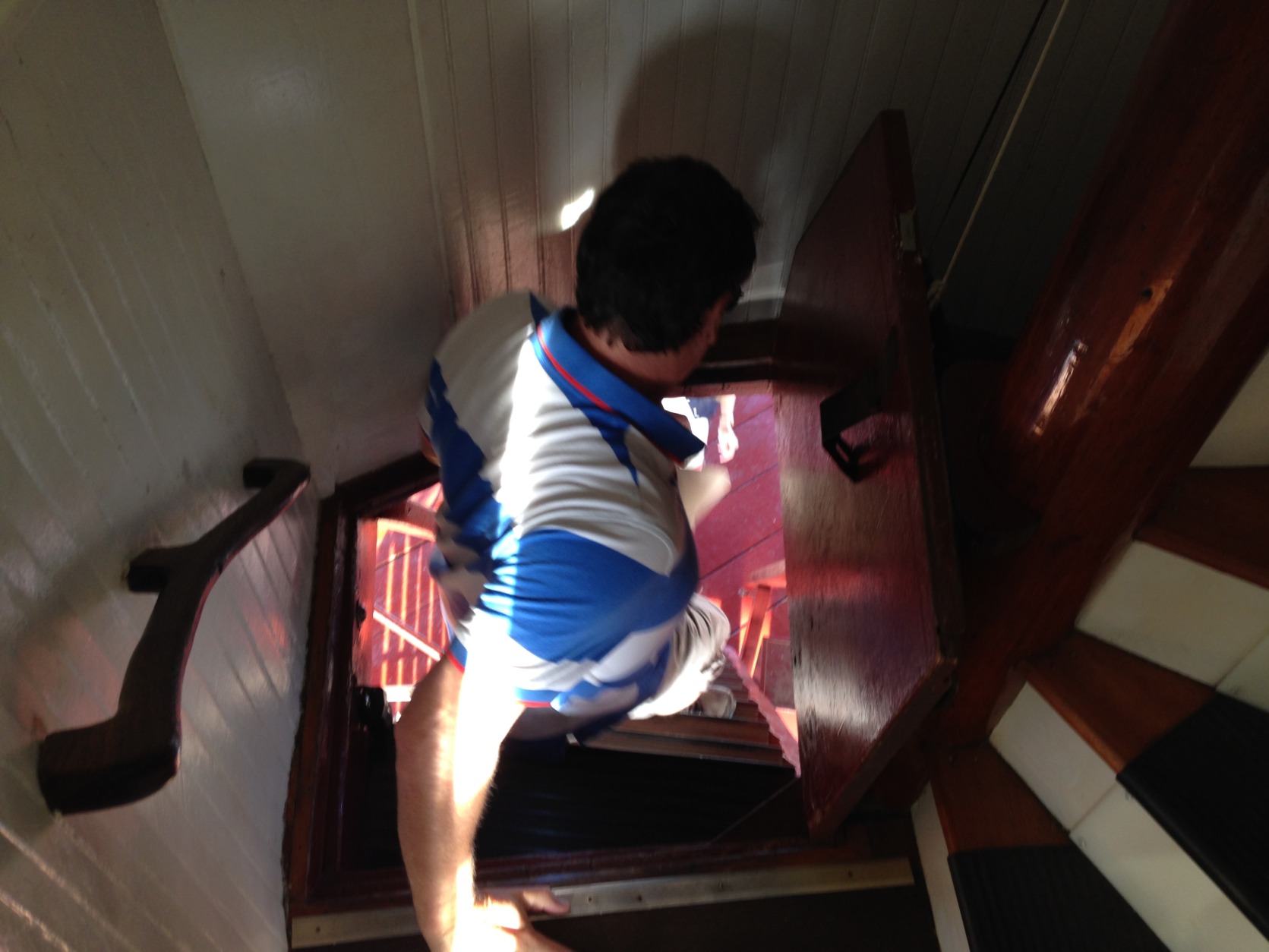
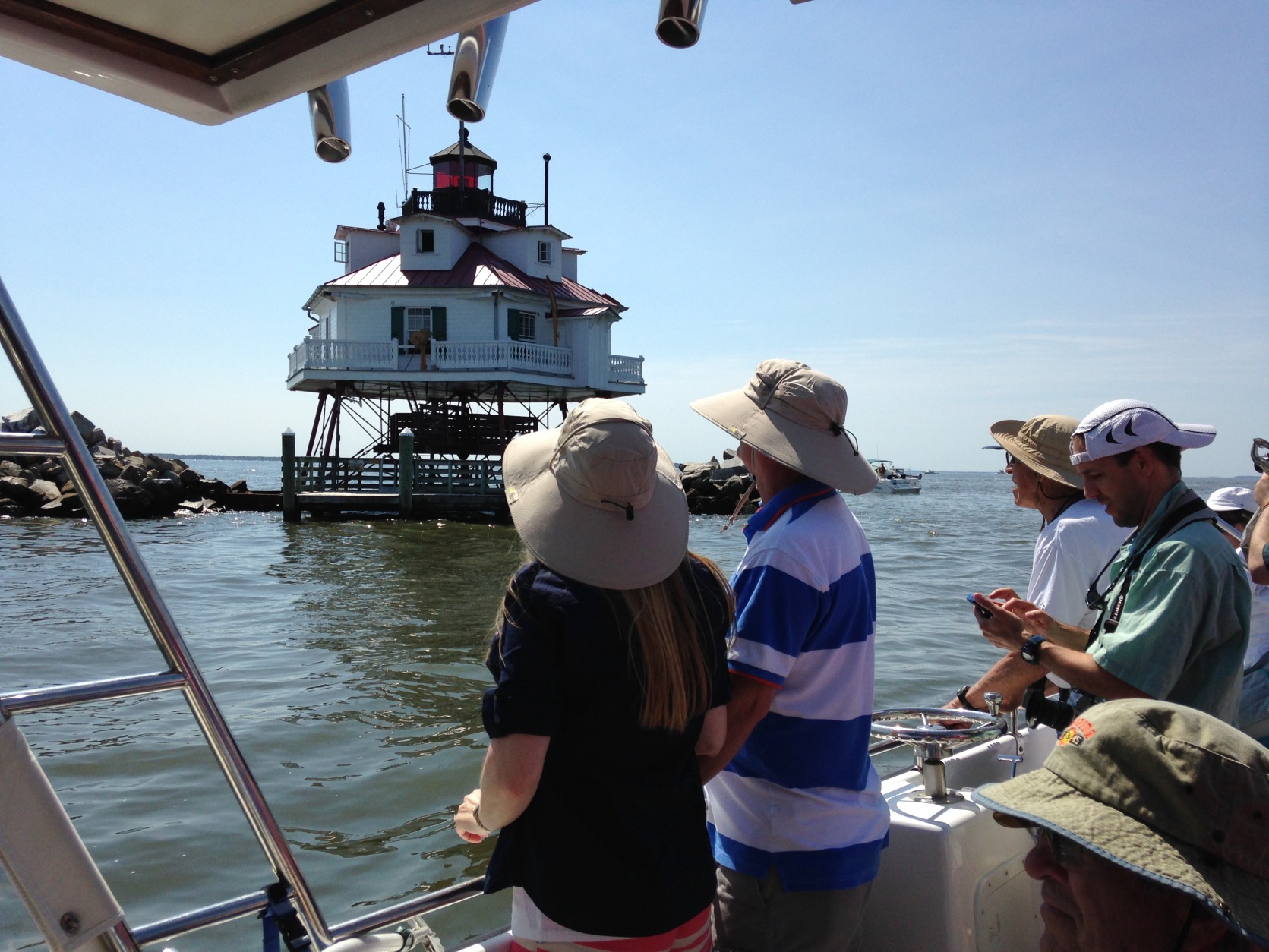
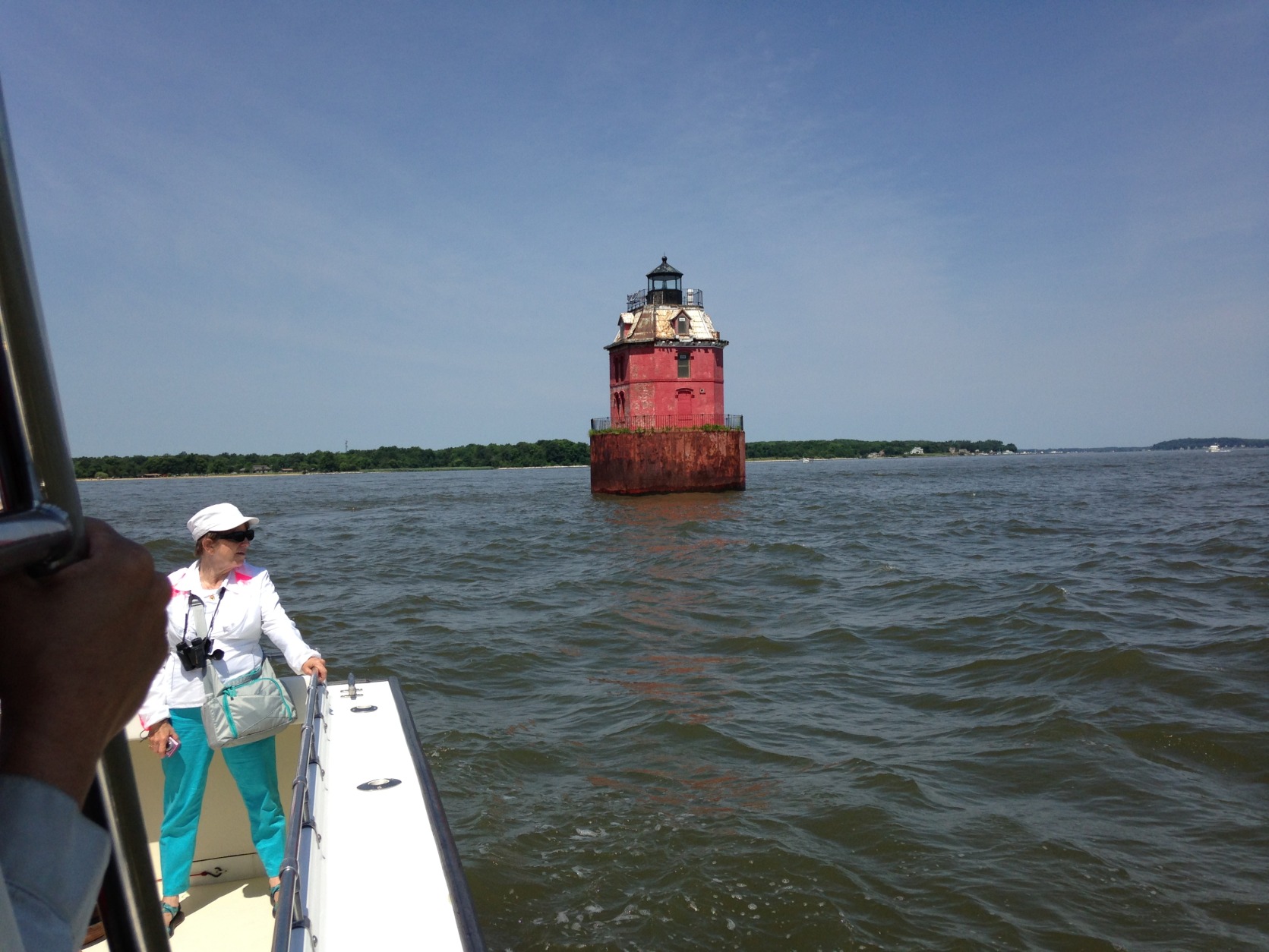
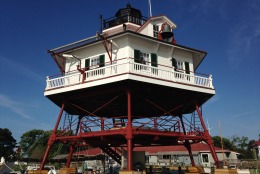
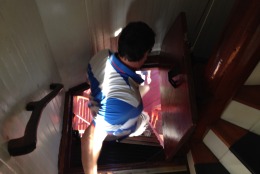
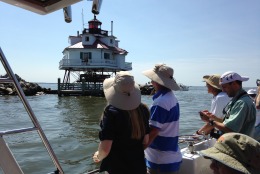
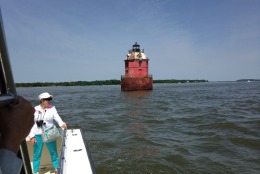
WASHINGTON — If you’re up for an adventure, consider a trip to some fascinating sites you can’t get to in your car.
Lighthouse Adventure Cruises of the Chesapeake Bay are offered by the Calvert Marine Museum, which has been home to the Drum Point Lighthouse since 1975.
I took the northern tour, which cruises to five lighthouses as well as the site where the Drum Point Lighthouse used to be. There’s also a southern tour that gets you close to several other lighthouses.
On a recent Saturday, I was one of about 20 people who boarded the charter boat Never E-Nuff for the day-long tour, which included a stop for lunch at the Kentmoor Restaurant, at Kent Island.
The Museum’s Diane Milgrim, our tour guide, told us: “This is not only a lighthouse cruise, folks. I point out interesting facts along the way.
“You never know what you’re going to see on the bay. Sometimes we see dolphins. Sometimes we see stingrays, so keep your eyes peeled. If you see anything that looks really cool, let us know so that everybody can see it.”
Sure enough, several times during the trip I saw some brown cownose rays near the boat.
As the captain stopped near each lighthouse, Milgrim showered us with facts about them, including the size of their lenses.
␎ 
Tour guide Diane Milgrim of the Calvert Marine Museum with the Bloody Point Bar Light behind her. (WTOP/Michelle Basch)
There are several styles of lighthouses on the bay, including towers, caissons and screwpiles.
“A screwpile had pilings that were screwed down into the bed of the bay, and that’s what gave the lighthouse its support out in the water.”
Milgrim says ice on the bay did major damage to several lighthouses, including the one at Thomas Point.
“There was something that happened In January of 1877. The keeper wrote (that) there were nine days of terror when ice caused the lighthouse to vibrate with such violence that the lens, weighing 500 pounds, was broken.”
And in 1881, the Sharps Island Lighthouse, named after an island that no longer exists, was pushed around by heavy ice with the lighthouse keepers still on it.
“How scary would that be? From what I understand, it was moved five miles,” Milgrim said.
The Sharps Island light might be the most interesting, because ice on the bay that reached 40 feet thick left it tilted at a 20-degree angle in 1977. It remains tilted today.
Cruising under the Bay Bridge and getting a good look at the under-restoration Poplar Island were other unexpected highlights of the tour.
Get more information about Calvert Marine Museum’s Lighthouse Adventure Cruises.
Other lighthouse tours available on the bay:
Read up on the history of Chesapeake Bay lighthouses.
Follow @WTOP on Twitter and WTOP on Facebook.







